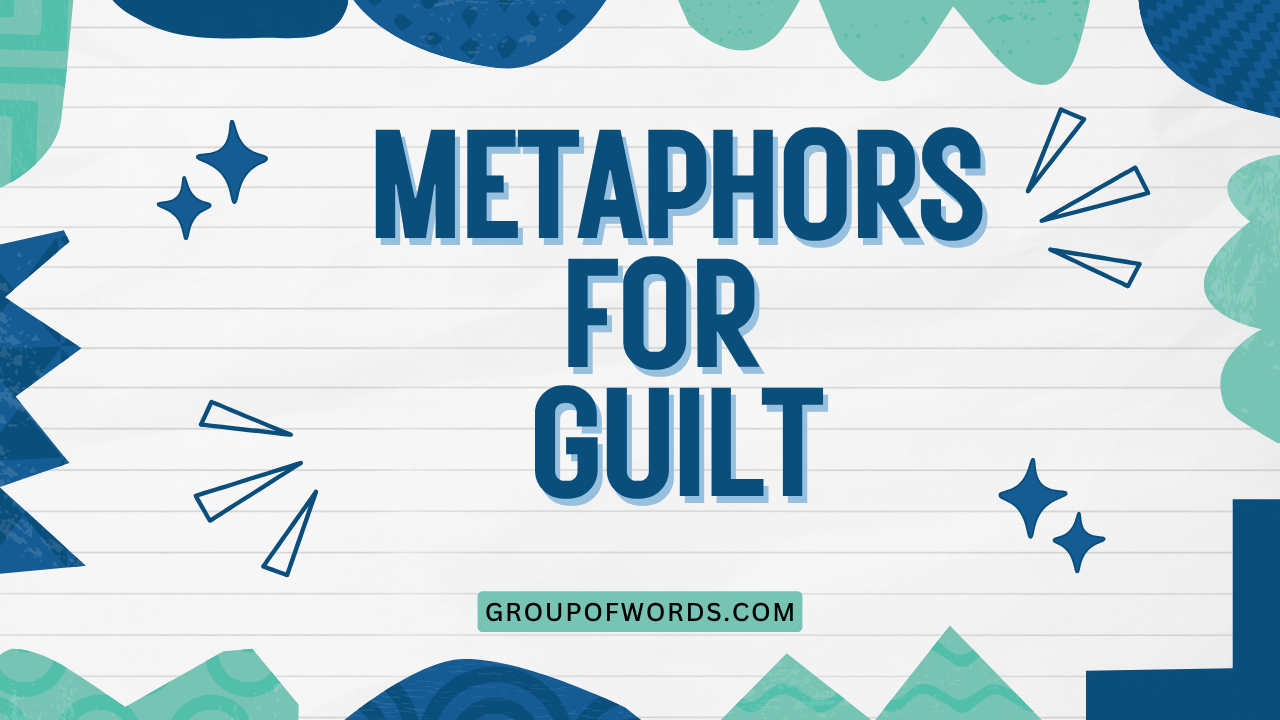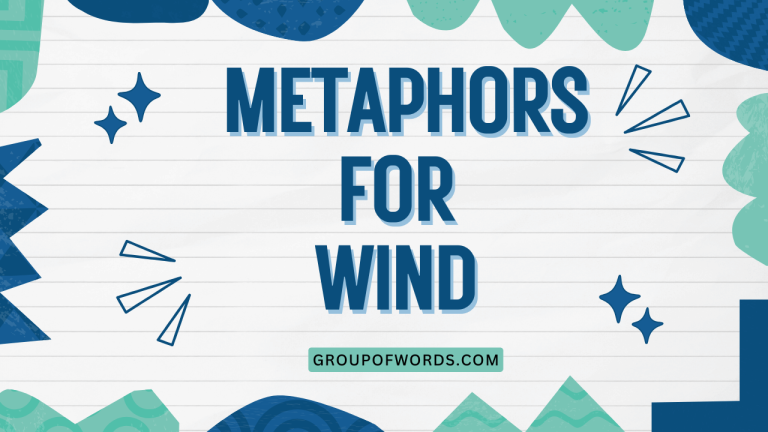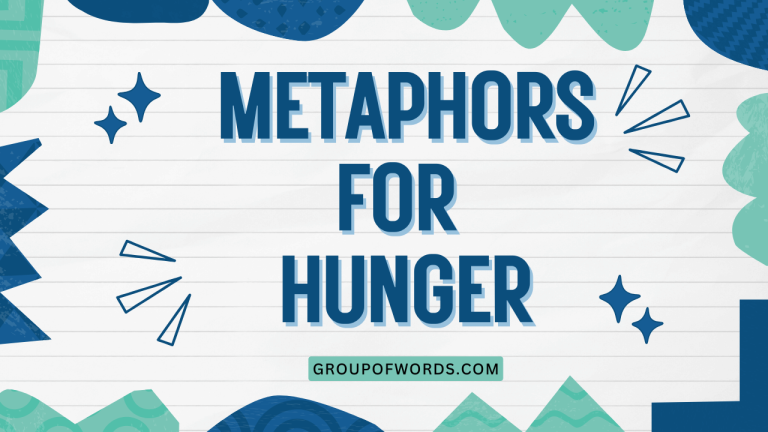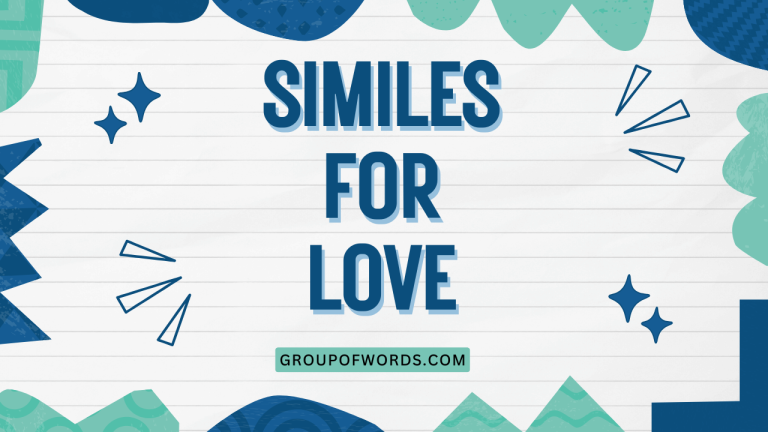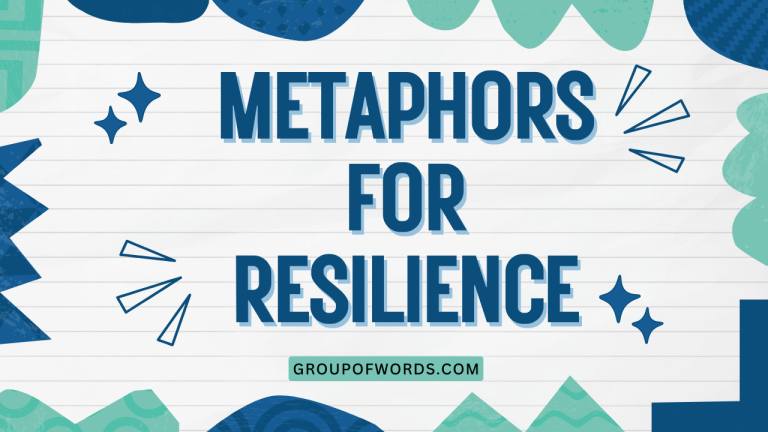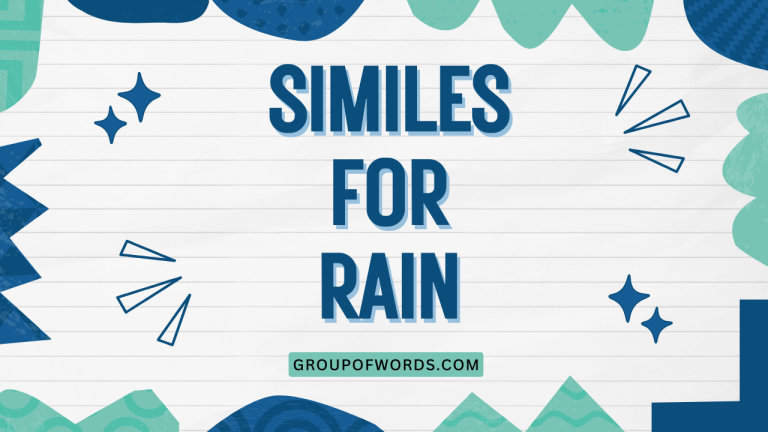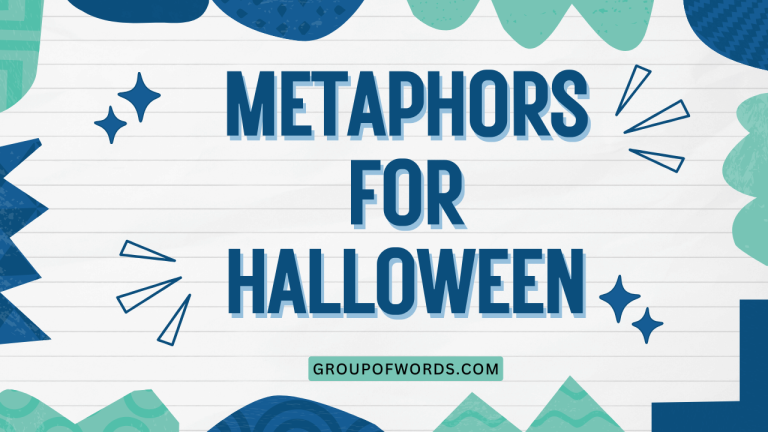Metaphors for Guilt: Understanding Figurative Language
Guilt is a complex emotion that often feels intangible and difficult to describe directly. As a result, we frequently turn to metaphors to express its weight, burden, and impact on our lives.
Understanding these metaphors not only enriches our comprehension of the English language but also provides deeper insights into how we process and communicate this powerful emotion. This article explores the various metaphors used to convey guilt, their structural components, and how they function in different contexts.
It is designed to benefit English language learners, writers, and anyone seeking to better articulate their emotional experiences.
This comprehensive guide will dissect the layers of meaning behind common guilt metaphors, providing you with the tools to recognize, interpret, and even craft your own evocative descriptions. Whether you’re an aspiring writer, an English language student, or simply someone interested in the nuances of human emotion, this exploration of guilt metaphors will enhance your linguistic and emotional intelligence.
Table of Contents
- Introduction
- Definition of Metaphor and Guilt
- Structural Breakdown of Guilt Metaphors
- Types of Guilt Metaphors
- Examples of Guilt Metaphors
- Usage Rules for Guilt Metaphors
- Common Mistakes When Using Guilt Metaphors
- Practice Exercises
- Advanced Topics in Guilt Metaphors
- Frequently Asked Questions
- Conclusion
Definition of Metaphor and Guilt
A metaphor is a figure of speech that directly compares two unrelated things without using “like” or “as.” It asserts that one thing *is* another, creating a vivid and often insightful connection. Metaphors are powerful tools for conveying complex ideas and emotions in a relatable and memorable way. They allow us to understand abstract concepts by associating them with concrete experiences.
Guilt, on the other hand, is an emotional state characterized by feelings of regret, remorse, or culpability for perceived wrongdoing, either real or imagined. It’s a self-conscious emotion that arises from violating one’s own moral standards or the social norms of a community. Guilt can manifest in various ways, from mild unease to debilitating anguish, and often motivates individuals to seek atonement or make amends.
When we combine these two, metaphors for guilt, we find expressions that attempt to capture the intangible feeling of guilt through tangible imagery. This helps us to understand and communicate the often overwhelming and isolating experience of guilt.
Structural Breakdown of Guilt Metaphors
Guilt metaphors, like all metaphors, consist of two primary components: the tenor and the vehicle. The tenor is the subject being described (in this case, guilt), and the vehicle is the image or concept used to represent the tenor. The effectiveness of a guilt metaphor lies in the resonance between the tenor and the vehicle – how well the chosen image captures the essence of the emotional experience.
The general structure is: Guilt is [Vehicle]. For example, in “Guilt is a heavy chain,” guilt (the tenor) is being equated to a heavy chain (the vehicle).
The shared characteristics, or common ground, between guilt and a heavy chain are the feelings of being weighed down, restricted, and burdened.
Understanding this structure allows us to analyze and interpret the underlying meaning of different guilt metaphors. It also enables us to create our own metaphors that accurately reflect the specific nuances of our guilt.
Types of Guilt Metaphors
Guilt metaphors can be categorized based on the type of imagery they employ. Here are some common categories:
Guilt as a Burden
This is one of the most prevalent types of guilt metaphors. It portrays guilt as something heavy and difficult to carry, emphasizing the emotional weight and strain it imposes on the individual.
Guilt as a Weight
Similar to the “burden” metaphor, this emphasizes the oppressive nature of guilt, suggesting that it slows you down, makes it hard to move forward, and can even crush you.
Guilt as a Stain
This metaphor focuses on the idea that guilt taints or blemishes one’s character or reputation, leaving a lasting mark that is difficult to remove. It highlights the sense of shame and moral defilement associated with guilt.
Guilt as a Disease
This metaphor portrays guilt as something that infects and weakens the individual, causing emotional and psychological distress. It emphasizes the debilitating and pervasive nature of guilt, suggesting that it can consume and destroy from within.
Guilt as a Prison
This metaphor depicts guilt as a confining and restricting force that traps the individual, limiting their freedom and preventing them from moving on with their lives. It highlights the sense of being trapped by one’s past actions and unable to escape the consequences.
Guilt as a Monster
This metaphor personifies guilt as a menacing and destructive force that haunts and torments the individual. It emphasizes the fear, anxiety, and self-loathing that can accompany guilt, suggesting that it can overwhelm and consume one’s thoughts and emotions.
Examples of Guilt Metaphors
The following tables provide extensive examples of guilt metaphors, categorized by type. Each example illustrates how guilt is compared to a different object or concept to convey its specific impact.
Table 1: Guilt as a Burden
This table illustrates how the concept of “burden” is used to represent the heavy emotional toll of guilt. The examples show the diverse ways in which guilt can weigh a person down.
| Guilt Metaphor | Explanation |
|---|---|
| His guilt was a heavy backpack, always weighing him down. | Guilt is portrayed as a constant, cumbersome weight affecting his daily life. |
| She carried her guilt like a leaden shield, protecting her from further harm but also preventing her from connecting with others. | Guilt is both protective and isolating, a heavy weight that hinders relationships. |
| The guilt of his actions was a millstone around his neck, dragging him down into despair. | Guilt is an inescapable burden leading to profound sadness. |
| Guilt was a crushing weight on her shoulders, bowing her down with shame. | Guilt is physically and emotionally debilitating. |
| He shouldered the guilt like a sack of rocks, each stone a reminder of his transgression. | Guilt is a tangible burden, with each aspect of the wrongdoing represented by a physical weight. |
| Her guilt was a heavy cloak, suffocating her with remorse. | Guilt is oppressive and stifling, hindering her ability to breathe freely. |
| The weight of his guilt was a burden he could no longer bear. | Guilt is an unbearable load, pushing him to his breaking point. |
| Guilt felt like carrying the world on her back, an impossible task. | Guilt is an overwhelming responsibility, too much for one person to handle. |
| His guilt was a heavy anchor, holding him back from moving forward. | Guilt is a hindrance, preventing progress and growth. |
| She carried her guilt like a cumbersome trophy of shame. | Guilt is a constant and unwanted reminder of her misdeeds. |
| The guilt was a burden he could never truly set down. | Guilt is a permanent fixture in his life, an inescapable weight. |
| Guilt was a heavy chain, binding him to his past. | Guilt restricts his freedom and ties him to his past actions. |
| He dragged the weight of his guilt behind him, a constant reminder of his failure. | Guilt is a persistent and visible consequence of his actions. |
| Her guilt was a heavy debt, constantly demanding repayment. | Guilt is an obligation that must be addressed. |
| The guilt was a heavy rucksack, filled with regret. | Guilt is a container of remorse, always present and weighing him down. |
| He bore the guilt like a king carries his crown, a symbol of unwelcome authority. | Guilt is an unwanted responsibility that he must carry with him always. |
| Her guilt was a heavy cross to bear, a constant source of suffering. | Guilt is a significant burden that causes ongoing pain and hardship. |
| The guilt was a heavy stone in his pocket, always reminding him of his misdeed. | Guilt is a constant, tangible reminder of his mistake. |
| He carried his guilt like a heavy secret, afraid to share it with anyone. | Guilt is a hidden burden, isolating him from others. |
| The guilt was a heavy blanket, smothering his joy and happiness. | Guilt suppresses his positive emotions, leaving him feeling despondent. |
| His guilt was an iron weight, pressing down on his spirit. | Guilt is a heavy force that crushes his enthusiasm and optimism. |
| She carried the guilt as if it were a newborn child, delicate and needing constant care. | Guilt is a fragile and demanding responsibility. |
Table 2: Guilt as a Stain
This table showcases how the imagery of “stain” is used to represent the lingering and defiling nature of guilt. The examples emphasize the difficulty of removing the blemish caused by past actions.
| Guilt Metaphor | Explanation |
|---|---|
| His guilt was a stain on his conscience, impossible to wash away. | Guilt is a permanent mark on his moral compass. |
| The guilt left a dark stain on her soul, forever altering her perception of herself. | Guilt deeply affects her self-image, creating lasting damage. |
| Guilt was a blot on his reputation, tarnishing his achievements. | Guilt damages his public image and undermines his successes. |
| The stain of guilt clung to him, no matter how hard he tried to cleanse himself. | Guilt is persistent and difficult to overcome. |
| Her guilt was a permanent mark, a constant reminder of her wrongdoing. | Guilt is an indelible reminder of her past actions. |
| The guilt had stained her hands, making her feel unworthy. | Guilt makes her feel morally impure and inadequate. |
| Guilt was a dark shadow, staining everything she touched. | Guilt negatively affects all aspects of her life. |
| The stain of his guilt spread, affecting his relationships and career. | Guilt has far-reaching consequences, impacting various areas of his life. |
| Guilt was an indelible ink, staining the pages of her life. | Guilt permanently marks her life story. |
| The stain of guilt remained, a constant reminder of his failure. | Guilt serves as a persistent reminder of his shortcomings. |
| Her guilt was a deep dye, coloring her world with regret. | Guilt infuses her experiences with sadness and remorse. |
| The stain of guilt was etched into his memory, never to be forgotten. | Guilt is indelibly imprinted in his mind. |
| Guilt was a dark spot, marring the beauty of her life. | Guilt diminishes the positive aspects of her existence. |
| The stain of guilt lingered, poisoning his thoughts and actions. | Guilt has a corrupting influence on his mind and behavior. |
| His guilt was a black mark on his record, forever altering his path. | Guilt permanently damages his opportunities and future prospects. |
| Her guilt was a dark smudge, difficult to erase from her memory. | Guilt is hard to remove from her thoughts and feelings. |
| The stain of guilt was like a shadow, following him everywhere he went. | Guilt is a constant presence, haunting him wherever he goes. |
| His guilt was a dark cloud, staining the brightness of his days. | Guilt overshadows his happiness and positivity. |
| Her guilt was a dirty smear, sullying her reputation. | Guilt damages her public image and integrity. |
| The stain of guilt was a blemish on his character, undermining his self-worth. | Guilt degrades his sense of personal value and integrity. |
| His guilt was a permanent tattoo, etched onto his soul. | Guilt is an unchangeable and defining element of his being. |
| She felt the stain of guilt seep into her being, altering her from the inside out. | Guilt deeply penetrates her essence, transforming her character. |
Table 3: Guilt as a Prison
This table illustrates how guilt can be metaphorically represented as a prison, trapping individuals within their own minds and hindering their freedom.
| Guilt Metaphor | Explanation |
|---|---|
| His guilt was a prison, locking him away from happiness. | Guilt confines him, preventing him from experiencing joy. |
| She was trapped in a prison of guilt, unable to forgive herself. | Guilt confines her, preventing self-compassion. |
| Guilt had built walls around his heart, isolating him from others. | Guilt creates emotional barriers, hindering relationships. |
| He was serving a life sentence in the prison of his own guilt. | Guilt is a long-term and inescapable punishment. |
| The bars of guilt kept her confined, preventing her from moving forward. | Guilt restricts her progress and growth. |
| Guilt was a cage, trapping him in a cycle of remorse. | Guilt confines him in a repeating pattern of regret. |
| She was imprisoned by her guilt, unable to escape the consequences of her actions. | Guilt confines her, preventing her from overcoming the effects of her deeds. |
| Guilt had become his jailer, dictating his every thought and action. | Guilt controls his thinking and behavior. |
| He found himself locked in a solitary cell of guilt, with no escape in sight. | Guilt isolates him, offering no hope of relief. |
| Her guilt was a fortress, keeping her guarded and isolated. | Guilt creates emotional barriers, protecting her but also isolating her. |
| The prison of guilt held him captive, preventing him from experiencing peace. | Guilt confines him, barring him from tranquility. |
| She was trapped within the walls of her own guilt, unable to break free. | Guilt confines her, making it impossible to escape. |
| Guilt had built a labyrinth around his mind, trapping him in a maze of regret. | Guilt confuses and disorients him, leading to endless remorse. |
| He was confined to the prison of his conscience, unable to find release. | Guilt confines him, offering no way to alleviate his moral burden. |
| Her guilt was a dungeon, dark and suffocating, with no hope of escape. | Guilt confines her in a dismal, oppressive state with no prospect of relief. |
| The prison doors of guilt slammed shut, sealing him off from redemption. | Guilt confines him, preventing him from seeking forgiveness. |
| She was serving a life sentence in the jail of her own making, haunted by her past deeds. | Guilt confines her as a consequence of her own actions, with the past constantly haunting her. |
| His guilt was a locked room in his mind, filled with haunting memories. | Guilt confines his thoughts to disturbing memories. |
| She was confined by the chains of her guilt, bound to her past mistakes. | Guilt restricts her, connecting her to her previous errors. |
| The prison of guilt held him captive, preventing him from living a full life. | Guilt confines him, barring him from experiencing life to the fullest. |
| She was trapped within the inescapable confines of her own guilt, unable to move forward. | Guilt confines her, preventing her from progressing in life. |
Table 4: Guilt as a Disease
This table shows examples of metaphors using “disease” to illustrate the damaging and pervasive nature of guilt, often highlighting its ability to corrupt and weaken the individual from within.
| Guilt Metaphor | Explanation |
|---|---|
| His guilt was a disease, slowly eating away at his soul. | Guilt gradually destroys his inner peace and well-being. |
| She was infected with guilt, its poison spreading through her veins. | Guilt contaminates her, negatively impacting her entire being. |
| Guilt was a virus, corrupting her thoughts and actions. | Guilt contaminates her thinking and behavior. |
| He was consumed by the disease of guilt, withering away from the inside out. | Guilt destroys him internally, leading to his decline. |
| The illness of guilt plagued her, leaving her weak and vulnerable. | Guilt makes her feeble and susceptible to further harm. |
| Guilt was a festering wound, poisoning his mind and spirit. | Guilt creates a harmful, ongoing problem that affects his mental and emotional state. |
| She was sick with guilt, unable to find a cure for her remorse. | Guilt makes her unwell, with no remedy for her regret. |
| Guilt had become a malignant tumor, growing and spreading throughout his being. | Guilt develops into a serious and pervasive issue that consumes him. |
| He was suffering from the disease of conscience, tormented by his past actions. | Guilt causes him to agonize over his past deeds. |
| Her guilt was a chronic ailment, constantly draining her energy and vitality. | Guilt is a persistent condition that depletes her strength and liveliness. |
| The infection of guilt spread, affecting his relationships and his work. | Guilt has far-reaching consequences, impacting various areas of his life. |
| She was battling the disease of self-reproach, constantly criticizing herself. | Guilt leads her to continually blame and criticize herself. |
| Guilt was a slow-acting poison, gradually destroying his happiness and peace of mind. | Guilt slowly undermines his joy and tranquility. |
| He was consumed by the malady of guilt, unable to find relief from his suffering. | Guilt overwhelms him, leaving him without comfort. |
| Her guilt was a sickness of the soul, requiring deep healing and forgiveness. | Guilt is a profound emotional wound that needs extensive recovery and absolution. |
| The disease of guilt left him emotionally scarred, wary of repeating his past mistakes. | Guilt causes lasting emotional damage, making him cautious about future actions. |
| She was struggling to recover from the ailment of guilt, seeking solace and redemption. | Guilt makes her struggle to find comfort and atonement. |
| His guilt was a virus, infecting his thoughts and behavior, leading to self-destructive patterns. | Guilt contaminates his thinking and conduct, resulting in harmful behaviors. |
| She was overwhelmed by the symptoms of guilt, including anxiety, depression, and insomnia. | Guilt causes her to experience emotional distress, leading to mental health issues. |
| The disease of guilt had weakened his spirit, making it difficult to face the world with confidence. | Guilt diminishes his courage, making it hard to confront life with assurance. |
| She was seeking treatment for the illness of guilt, hoping to find peace and healing. | Guilt makes her search for solutions to find serenity and recovery. |
Usage Rules for Guilt Metaphors
When using guilt metaphors, it’s important to consider the following rules:
- Context Matters: Ensure the metaphor fits the overall tone and context of your writing or conversation. A highly dramatic metaphor might be inappropriate in a casual setting.
- Clarity: The metaphor should be understandable to your audience. Avoid obscure or overly complex imagery that could confuse the reader.
- Consistency: Maintain consistency within your metaphor. If you start with the image of guilt as a burden, avoid abruptly switching to guilt as a stain without a clear transition.
- Originality: While common metaphors can be effective, strive for originality to create a more impactful and memorable image.
- Emotional Resonance: Choose a metaphor that accurately reflects the specific nuances of the guilt you’re trying to convey. Consider the intensity, duration, and source of the guilt.
Common Mistakes When Using Guilt Metaphors
Here are some common mistakes to avoid when using guilt metaphors:
- Mixed Metaphors: Combining incompatible images within a single metaphor.
- Incorrect: Her guilt was a heavy stain, weighing her down like a stone. (Mixing “stain” and “weight”)
- Correct: Her guilt was a heavy stone, weighing her down.
- Correct: Her guilt was a dark stain, impossible to wash away.
- Clichéd Metaphors: Overusing common and unoriginal metaphors.
- Clichéd: His guilt was a heavy burden.
- Improved: His guilt was a leaden cage, trapping him in his past mistakes.
- Inappropriate Tone: Using a metaphor that doesn’t match the emotional intensity of the situation.
- Inappropriate: For a minor mistake: “His guilt was a monstrous beast devouring him.”
- Improved: For a minor mistake: “His guilt was a small pebble in his shoe, irritating him.”
- Lack of Clarity: Using a metaphor that is too vague or abstract.
- Unclear: Her guilt was a feeling.
- Improved: Her guilt was a cold wind, chilling her to the bone.
Practice Exercises
Test your understanding of guilt metaphors with these exercises.
Exercise 1: Identifying Guilt Metaphors
Identify the guilt metaphor in each sentence and explain its meaning.
| Question | Answer |
|---|---|
| 1. The guilt was a viper, coiling around his heart. | Metaphor: Guilt as a viper. Meaning: Guilt is a dangerous and constricting force causing pain and fear. |
| 2. Her guilt was a shadow, darkening every corner of her life. | Metaphor: Guilt as a shadow. Meaning: Guilt pervades all aspects of her life, diminishing her happiness. |
| 3. His guilt was a festering wound, never fully healing. | Metaphor: Guilt as a festering wound. Meaning: Guilt is an ongoing source of pain and suffering. |
| 4. She carried her guilt like a fragile egg, terrified of breaking it. | Metaphor: Guilt as a fragile egg. Meaning: Guilt is a delicate and burdensome responsibility. |
| 5. The guilt was a heavy fog, clouding his judgment. | Metaphor: Guilt as a heavy fog. Meaning: Guilt obscures his ability to think clearly. |
| 6. He was drowning in a sea of guilt, struggling to stay afloat. | Metaphor: Guilt as a sea. Meaning: Guilt overwhelms him, threatening to consume him. |
| 7. Her guilt was a thorn in her side, constantly irritating her. | Metaphor: Guilt as a thorn. Meaning: Guilt is a persistent source of annoyance and discomfort. |
| 8. The guilt was a lead weight in his stomach, making him nauseous. | Metaphor: Guilt as a lead weight. Meaning: Guilt is a physical burden causing him distress. |
| 9. She felt the guilt like a shackle, binding her to the past. | Metaphor: Guilt as a shackle. Meaning: Guilt restricts her freedom and ties her to her past actions. |
| 10. His guilt was a bitter pill to swallow, difficult but necessary to accept. | Metaphor: Guilt as a bitter pill. Meaning: Guilt is an unpleasant truth that he must confront. |
Exercise 2: Creating Guilt Metaphors
Complete the following sentences by creating your own guilt metaphors.
- His guilt was like __________, constantly reminding him of his mistake.
- She felt her guilt as __________ , preventing her from moving forward.
- The guilt was __________ , slowly poisoning his happiness.
- Her guilt had become __________ , trapping her in a cycle of regret.
- He carried his guilt like __________ , a constant reminder of his failure.
- Her guilt felt like __________ , making it difficult to breathe.
- The guilt was __________ , obscuring her ability to see the good in her life.
- He was burdened by guilt, which felt like __________.
- The weight of her guilt was __________ , crushing her spirit.
- His guilt was __________, forever altering his perception of himself.
Possible Answers:
- His guilt was like an echo, constantly reminding him of his mistake.
- She felt her guilt as a heavy chain, preventing her from moving forward.
- The guilt was a slow-acting poison, slowly poisoning his happiness.
- Her guilt had become a bottomless pit, trapping her in a cycle of regret.
- He carried his guilt like a brand, a constant reminder of his failure.
- Her guilt felt like a tight knot in her chest, making it difficult to breathe.
- The guilt was a dark curtain, obscuring her ability to see the good in her life.
- He was burdened by guilt, which felt like carrying a mountain on his back.
- The weight of her guilt was an avalanche, crushing her spirit.
- His guilt was an acid, forever altering his perception of himself.
Advanced Topics in Guilt Metaphors
For advanced learners, consider exploring these topics:
- Cultural Variations: How do different cultures express guilt metaphorically? Are there specific images or concepts that are more prevalent in certain societies?
- Literary Analysis: Analyze the use of guilt metaphors in classic and contemporary literature. How do authors use metaphors to develop characters and themes?
- Psychological Impact: How do guilt metaphors influence our emotional state and behavior? Can certain metaphors be more helpful or harmful in processing guilt?
- Creating Novel Metaphors: Experiment with crafting original and impactful guilt metaphors that capture the complexity of the emotion in unique ways.
Frequently Asked Questions
- What is the difference between a metaphor and a simile?
A metaphor directly equates two things (e.g., “Guilt is a prison”), while a simile uses “like” or “as” to make a comparison (e.g., “Guilt is like a prison”). Metaphors are generally considered more powerful and evocative because they assert a direct connection.
- Why are metaphors important in understanding emotions?
Metaphors help us understand abstract and complex emotions by relating them to tangible and relatable experiences. They provide a framework for processing and communicating these emotions effectively.
- How can I improve my ability to create effective guilt metaphors?
Read widely, pay attention to your own emotional experiences, and practice using figurative language. Consider the specific nuances of the guilt you’re trying to convey and choose imagery that resonates with those nuances.
- Are some guilt metaphors more harmful than others?
Yes. Metaphors that portray guilt as overwhelming and inescapable can be detrimental to mental health. It’s important to use metaphors that acknowledge the possibility of redemption and healing.
- Can metaphors for guilt be used in a positive way?
Yes, metaphors can be used positively to highlight the potential for growth and change that can arise from acknowledging guilt. For example, “Guilt is a compass, guiding us towards moral correction.”
- How do cultural differences affect the interpretation of guilt metaphors?
Different cultures may have varying beliefs and values related to guilt, which can influence the interpretation of metaphors. For instance, some cultures may emphasize collective guilt, while others focus on individual responsibility.
- What role does context play in understanding metaphors for guilt?
Context is extremely important. The specific situation, relationship dynamics, and cultural background all influence how a metaphor for guilt will be understood. Without proper context, a metaphor can easily be misinterpreted or lose its intended impact.
- How can I avoid using clichéd metaphors when describing guilt?
To avoid clichés, try brainstorming a list of concrete objects, sensations, or experiences that relate to the specific feeling of guilt you want to describe. Consider unusual or unexpected comparisons that haven’t been overused. Use a thesaurus to find fresh alternatives for common words associated with guilt, such as “burden,” “weight,” or “stain.”
Conclusion
Understanding metaphors for guilt is crucial for enhancing both your linguistic skills and emotional intelligence. These figurative expressions allow us to articulate the often-intangible experience of guilt in a relatable and impactful way.
By recognizing the different types of guilt metaphors, understanding their structural components, and avoiding common mistakes, you can effectively use this powerful tool to communicate your emotions and understand the emotions of others.
Remember to consider the context, strive for originality, and choose metaphors that accurately reflect the specific nuances of the guilt you’re trying to convey. As you continue to explore the world of figurative language, you’ll discover new and creative ways to express the complexities of the human experience.
Keep practicing, keep exploring, and keep pushing the boundaries of your linguistic abilities.
